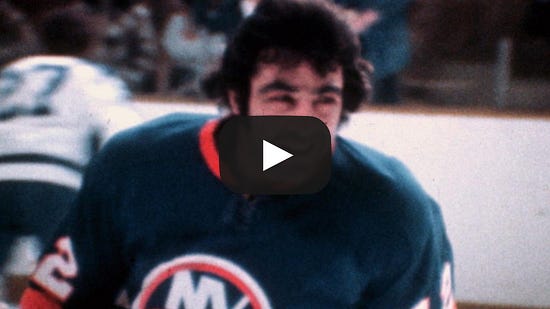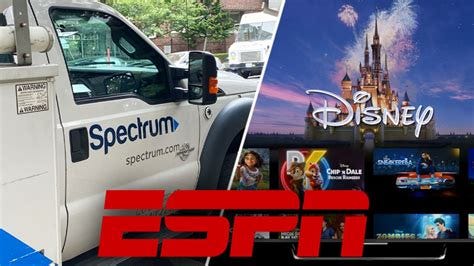By TERRY LYONS
BOSTON – In 1975, cable television was not available in our town, but was available one town to the north as CableVision and other wanna-be providers fought over territorial rights for pseudo-monopolies in a lucrative business to wire-up the five boroughs of New York City and all of Long Island.
On September 1 of this year, Benjamin Mullin, writing in The New York Times, shared his views from a shareholder’s meeting of Charter Communications. Mullin informed his readers: “One of the biggest cable companies in the United States has a message for media companies, its major partners in a decades-old business: The traditional cable-TV model is broken, and it needs to be fixed or abandoned. Cable TV has become too expensive for consumers and providers, Charter Communications said in an 11-page presentation to investors on Friday, adding that cord-cutters and rising fees are contributing to a “vicious video cycle.”
No shit, Sherlock.
A group of 14-and-15-year olds could’ve predicted that back in 1975.
A look-back into CableVision’s past beckons back to the 1960s when Charles Dolan, father of Madison Square Garden Center, and the New York Knicks and New York Rangers franchise owner, James Dolan, created Sterling Manhattan Cable for Manhattan Island tv viewers and launched Home Box Office as the first of many cable-only content purveyors.
Knicks and Rangers games quickly disappeared from “over-the-air” WOR-TV 9 and fans were quick to find good friends with cable. Just ask former New York Islanders forward – J.P. Parise – who, on April 11, 1975, scored the series-winning goal to eliminate the favored New York Rangers and begin a magical run for the Islanders in the ‘75 NHL Stanley Cup Playoffs – all to be seen on Cable TV.
CableVision became Cablevision and it was sold, along with HBO, to Time-Life Inc. A few mergers and acquisitions later, Warner Communications got into the act and Time-Warner Cable accepted monthly checks from most of us Manhattanites. For the most part, Cablevision operated in New York and Boston until it purchased Cable TV systems in Colorado, Montana, Utah and Wyoming to enter the fray as Optimum West. The three year venture from 2010 to 2013 upped the ante on Optimum from $1.37 billion to $1.63 billion. The new system’s owners?
You guessed it – Charter Communications.
Looking back at Mullins and the paper of record – The New York Times informed readers: “Charter and the Walt Disney Company, owner of popular cable channels including ESPN and FX, which will not be available to Charter’s nearly 15 million pay-TV subscribers until both sides agree on how much Charter will pay Disney to carry its channels. Subscribers to Charter’s Spectrum TV service will be without access to the U.S. Open tennis tournament and college football games during (the Labor Day) holiday weekend.
“These so-called carriage fights are commonplace in the media industry, with channels going dark for days or weeks on cable systems while the two sides — cable providers and content creators — haggle over how much the channels are worth and how to bundle them. But Charter’s suggestion that parts of its own business model are in disrepair adds a new wrinkle to the crisis facing the cable-TV business.
“The fight comes at a time of declining subscriptions: More than five million Americans end their cable-TV subscriptions annually, according to research from SVB Moffett-Nathanson.
“Almost every traditional media company is trying to hold on to its cash-rich cable partnerships while building streaming businesses that will eventually replace those alliances. But investors in traditional media companies have also grown impatient with attempts to build new streaming businesses, saying they are not as profitable as cable TV used to be.”
Again – the NYT with the MONSTER revelations!
Mullin continued: “The pressure is forcing traditional media companies to wring cash from their businesses in other ways, including teaming up with competitors to bundle their streaming services.
“Adding to the challenges, tech companies like Apple and Amazon are willing to pay top dollar to acquire live sports rights, further driving up programming costs. Cable companies, for their part, have weaned themselves off depending wholly on traditional TV revenue, by offering services like wireless internet.”
Round and round it goes, and where it will stop? Nobody knows.
CableVision to Cablevision to Rainbow – add some adult programming, ahem. Then HBO, HBO West, and then SportsChannel to begin the trend of Regional Sports Networks the nation around.
In 2017, Cablevision went for a whopping $17.7 billion (including debt) to European telecom conglomerate Altice.
During the many transitions, there were carriage disputes du jour. From WABC-TV (NY) to the Food Network to FOX to the MSG Network (then owned by Gulf & Western) to YES Network to the NFL Network and Tennis Channel – all had their greedy fights to squeeze cash from every subscriber, one household at a time. Over decades, the services bundled programming to force subscribers to pony up one set for a multitude of sports even though they might only want Tennis or NBA TV.
The Cable TV companies had you by the billboards with their take it or leave it programming offers – never served a la carte.
Then came the cord-cutters!
YouTube, Sling Box, Hulu, FuboTV, and DIRECTV satellite dishes. They multiplied and content providers shifted strategies to look for the broadest of broadcasting opportunities. Sporting leagues, with the NBA taking the lead, embraced the new generational viewing habits – away from traditional TV, traditional cable and on to short highlights fit for mobile consumption. And, along came TikTok riding a wave of new programmers from Twitter (X), Tencent, Facebook, Amazon, Apple and every other content provider on the face of the earth – all able to go global with the flip of a switch.
Where does it leave us?
Nowhere Land.
Instead of studying the lay of the land, researching and grasping their future, television programmers, sports league properties, big-time communications conglomerates – shopping broadband – and even hardware providers – see Samsung TV – are all GUESSING what comes next, never KNOWINGwhat’s next.
The sports properties simply cash-in via the highest bidders and are rock-solid as the only real DVR-proof programming with live sports.
Marketers are utilizing newcomers, such as Samsung TV, to launch 24/7 FAST Channels like the deluge of infomercials being aired by DRAFT Kingsthis week, all in an effort to acquire sports gamblers.
Even Conan O’Brien found a new home.
In 1992, Bruce Springsteen performed his rock song, “57 Channels )and Nothin’ On),” but the truth is, the Boss is somewhere around 2,000 channels off in his pronouncement, but correct in his summation.
Everyday, it gets worse for the consumer, as it becomes more lucrative for the greedy cable and telecommunications companies – all with no resolution and no end in sight.
For those of us going month-to-month and pay check to pay check, the mounting expenses from a monthly cable-broadband-phone bundles are being supplemented by added offerings, like Netflix, Peacock TV (with its lure of Premiership soccer and PGA Tour event coverage amongst many other sports and original programming). Add ESPN+ or Paramount+, MAX(with original programming and motion pictures garnered from HBO) and a few others – you’re looking at a $200-a-month cable bill.
That’s a lotta boxes of pasta.
Today, they’ve got me at 1:00pm (ET) as I scream, “Give me my NFL RedZone or give me death!” And, the NFL Sunday Ticket is available to one and all on YouTube TV.
HERE NOW, THE NOTES: It’s only fitting to kick-off this first weekend of the NFL regular season with a column-full of football notes, lists, and even some predictions.
THE GUYS YOU WISH YOUR DRAFTED IN YOUR FANTASY LEAGUES: Otherwise known as the best of the best at each position for 2023:
QBs:
- Patrick Mahomes
- Jalen Hurts
- Josh Allen
- Joe Burrow
- Lamar Jackson
RBs
- Christian McCaffrey
- Austin Ekeler
- Saquon Barkley
- Derrick Henry
- Bijon Robinson
WRs
- Justin Jefferson
- Tyreek Hill
- Ja’Marr Chase
- Stefon Diggs
- Garrett Williams
- Cooper Kupp – injured
TEs
- Travis Kelce (injury or not)
- Mark Andrews
- George Kittle
- Tyler Higbee
- Darren Waller
NOTE: Although they decide almost each and every game, for sake of this column, screw the Kickers and Team Defense/Speical Teams listings.



